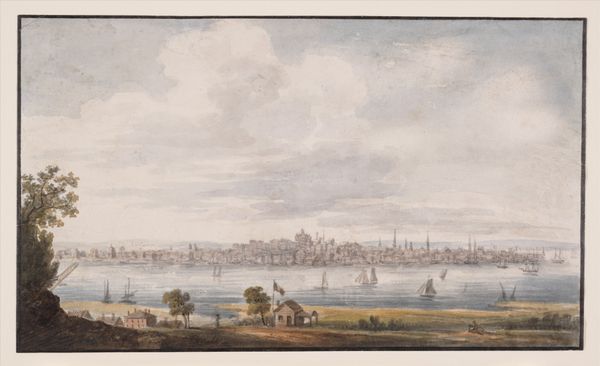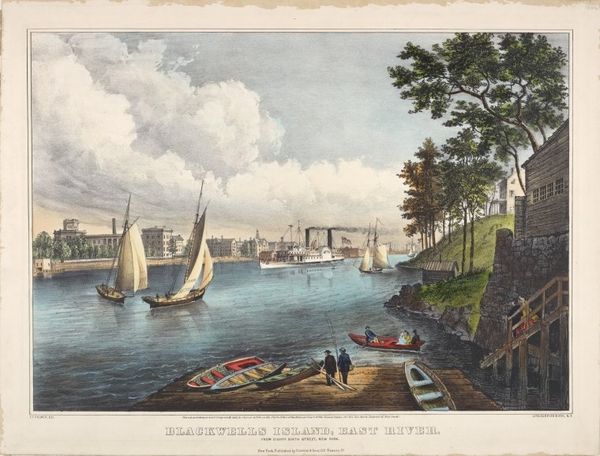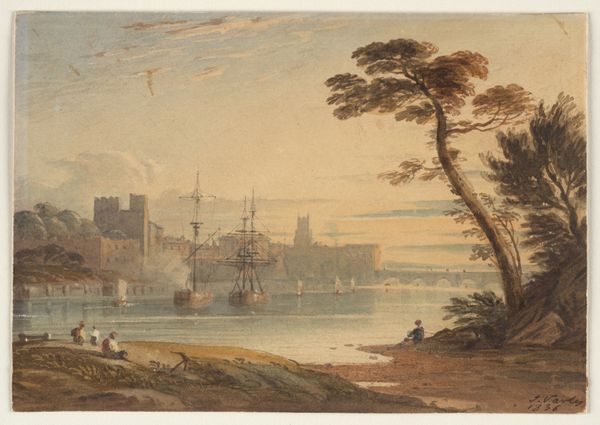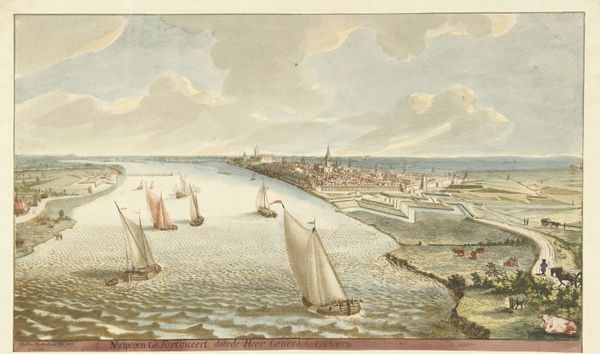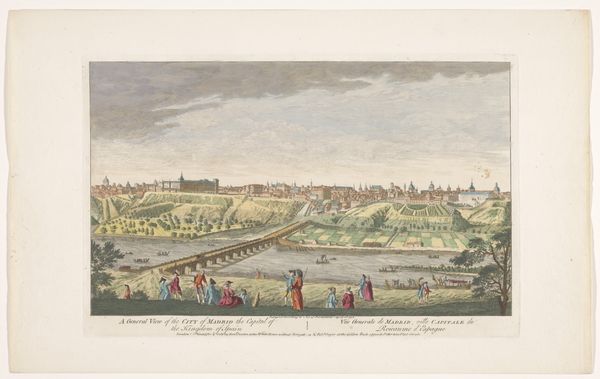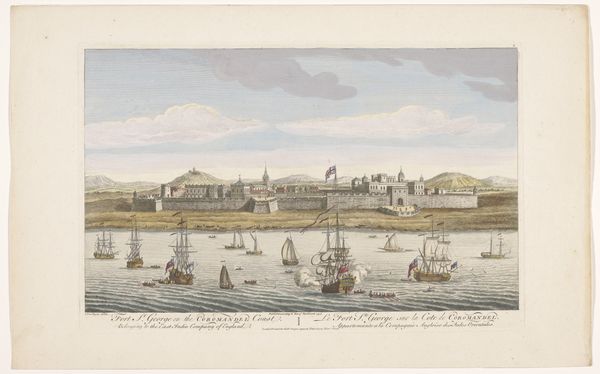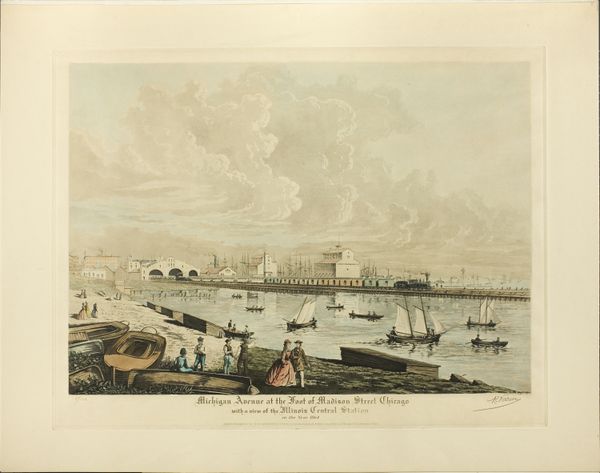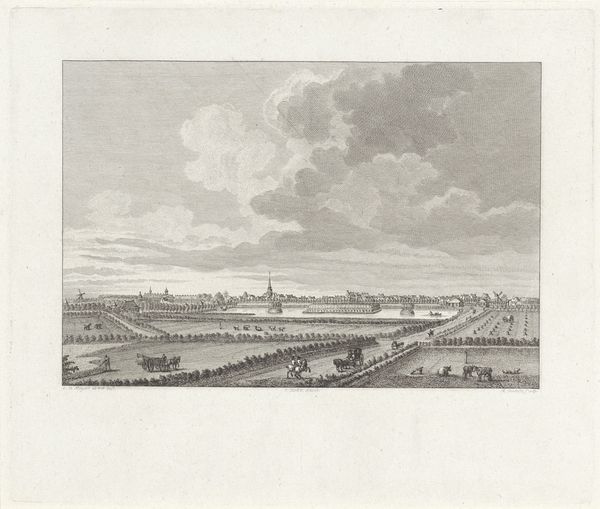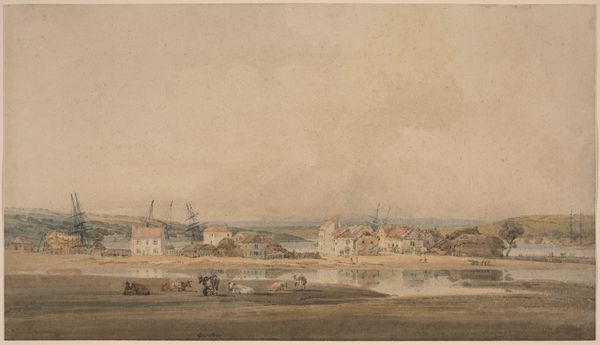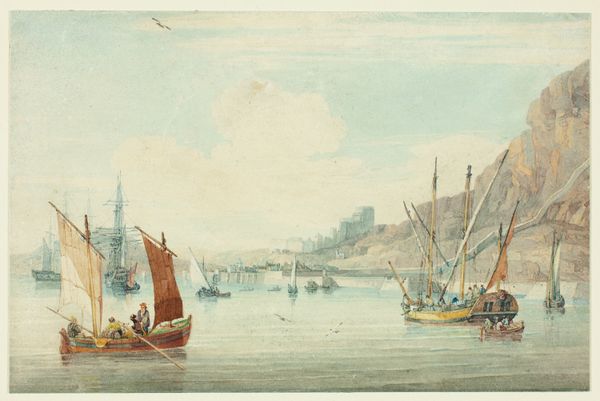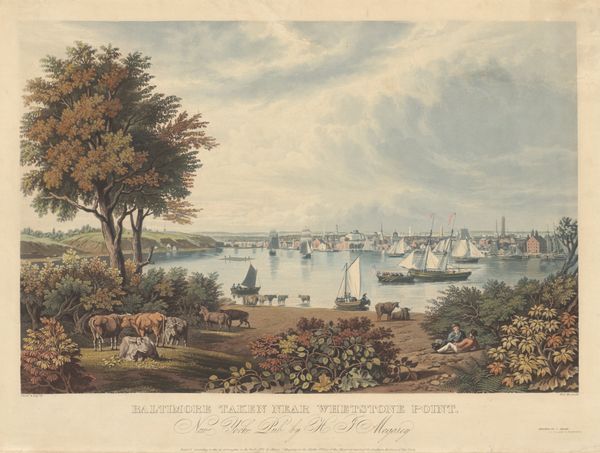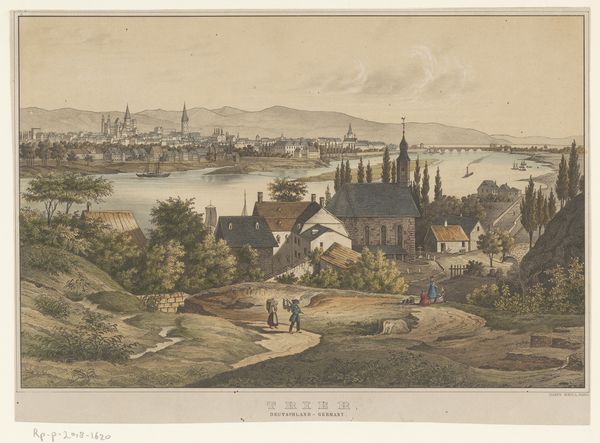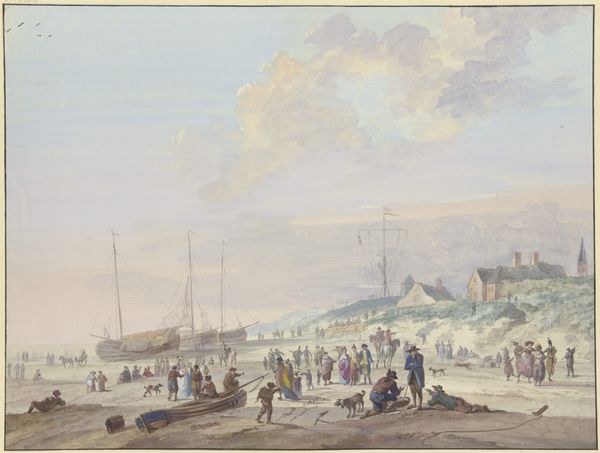
painting, print, watercolor
#
16_19th-century
#
painting
# print
#
landscape
#
watercolor
#
hudson-river-school
#
cityscape
#
watercolor
#
realism
Dimensions: sheet (trimmed within plate mark): 53.2 x 67.2 cm (20 15/16 x 26 7/16 in.)
Copyright: National Gallery of Art: CC0 1.0
Editor: This is “Baltimore from Federal Hill,” probably made in 1831 by William James Bennett, and rendered in watercolor. Looking at it, I immediately feel a sense of early American optimism, this bustling port city full of promise. What do you see in this piece? Curator: Optimism indeed! It’s interesting how Bennett, while capturing the burgeoning cityscape, also includes these almost pastoral foreground figures. It's like a carefully staged tableau. I’m reminded of how artists often grapple with representing the tension between untamed nature and the forward march of civilization. Notice how soft the watercolor is—it romanticizes what I imagine would have been a gritty, smoky industrial reality. Does it evoke that contrast for you, too? Editor: It does now! The haze in the distance suddenly reads as pollution. And those people in the foreground are very purposefully posed and oddly clean, contrasting the probable realities of early 19th century port workers. Almost staged, as you say. Curator: Precisely! And it leads me to ponder Bennett’s intentions. Was he purely documenting Baltimore, or was he also selling a particular vision of it, sanitized for broader consumption? A booming port, but with a comforting, picturesque veneer. Those cows aren’t going to milk themselves…What are your thoughts on the composition? Editor: I see the foreground scene of Federal Hill is quite charming and homey; whereas the harbor scene has its own compositional pull from the city skyline! Together it is more a promotion of commerce as well as idyllic town life. Curator: It really encapsulates the growth and industry of this era. That balance makes for a lasting, potent image, doesn’t it? Editor: It does. I had never thought about cityscapes selling a specific vision of progress before, rather than objective depiction. Thank you.
Comments
No comments
Be the first to comment and join the conversation on the ultimate creative platform.
